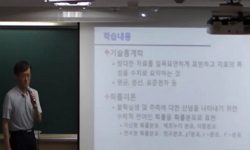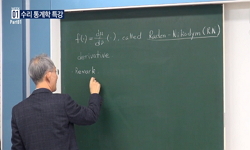Prior to purchasing a new product, consumers search external information about the product to make a well-informed purchase decision and decrease the potential risk involved in buying products. Due to the popularity of Internet, e-WOM has already beco...
http://chineseinput.net/에서 pinyin(병음)방식으로 중국어를 변환할 수 있습니다.
변환된 중국어를 복사하여 사용하시면 됩니다.
- 中文 을 입력하시려면 zhongwen을 입력하시고 space를누르시면됩니다.
- 北京 을 입력하시려면 beijing을 입력하시고 space를 누르시면 됩니다.
https://www.riss.kr/link?id=A103949839
-
저자
Chih-Chien Wang (National Taipei University) ; Yi-Ting Wang (National Taipei University)
- 발행기관
- 학술지명
- 권호사항
-
발행연도
2010
-
작성언어
English
-
주제어
Quantity ; Distribution ; Tolerance of ambiguity ; Involvement ; e-WOM ; 量性 ; 分销 ; 歧义容忍度 ; 卷入 ; 网络口碑
-
등재정보
KCI등재
-
자료형태
학술저널
- 발행기관 URL
-
수록면
280-292(13쪽)
-
KCI 피인용횟수
10
- 제공처
-
0
상세조회 -
0
다운로드
부가정보
다국어 초록 (Multilingual Abstract)
Prior to purchasing a new product, consumers search external information about the product to make a well-informed purchase decision and decrease the potential risk involved in buying products. Due to the popularity of Internet, e-WOM has already become an important information source for many consumers.
The current study proposed the idea that the distribution and quantity of electronic word-of-mouth would be related to consumers’ purchase intentions. In addition, consumers’ personality trait of tolerance of ambiguity and involvement would also be related to purchase intention. Tolerance of ambiguity and personal involvement were as mediators for the influence of e-WOM on purchase intentions.
This article conducted three studies in order to investigate the persuasion effects of e-WOM. A restaurant was selected as the target of e-WOM in all the three studies. Authors created a simulated online community for a gourmet restaurant in order to manipulate the experimental variables for the three studies.
Study 1 examined the impact of consumers’ characteristics of tolerance of ambiguity and involvement on the persuasion effects of e-WOM. This article recruited 122 voluntary participants in an online community. After deleting redundant responses and responses with missing data, a remaining 83 completed responses were accepted for data analysis. Study 1 adopted Partial Least Squares (PLS) to test the influence of involvement and ambiguity tolerance on purchase intention. The explanatory power of the construct was 19.4% for purchase intention and the path linkages from consumers’ tolerance of ambiguity and involvement to purchase intention were all significant. This study results displayed that a positive relationship between involvement and purchase intention and a negative relationship between ambiguity tolerance and purchase intention.
Study 2 utilized a three factorial design to test the relationship between the quantity of e-WOM and purchase intention. Three web pages containing one, five, or fifteen customer reviews were created as experimental scenarios. Study 2 recruited 150 participants in total. After deleting redundant responses and responses with missing data, the remaining 98 completed responses were accepted for data analysis. An ANOVA analysis revealed significant differences in consumers’ purchase intention among three groups of e-WOM quantity (F(2,95)=3.55, p<.05). The e-WOMs with five and 15 customer reviews influenced respondents to visit the restaurant, while the e-WOM with one customer review did not. Study 2 also used a t-test analysis to examine the differences in purchase intention between groups of one and 15 customer reviews. The results revealed that high involvement consumers reported higher purchase intentions in the 15 customer review group than in the one customer review (t=2.35, p<.05).
Study 3 utilized a three factorial design to test the influence of distribution of e-WOMs on purchase intention. It included three e-WOM rating score distributions: J-shape, U-shape, and inverted U-shape (normal distribution). Study 3 recruited a total of 329 participants. After deleting redundant responses and responses with missing data, the remaining 215 completed responses were accepted for data analysis. ANOVA analysis showed a significant difference in purchase intentions among groups with different e-WOM rating score distributions (F(2, 212)=3.59, p<.05). Participants reported higher intention to dine at the restaurant when the rating score distribution was J-shape. The ANOVA results also found that the impact of e-WOM distribution on persuasion effect existed only in the high involvement group. For high involvement consumers, J-shape e-WOMs increase consumers purchase intention compared to other distributions.
Base on the analyses of the three empirical studies, this article revealed that e-WOMs were more persuasive for individuals with high involvement and low ambiguity tolerance. Low ambiguity tol...
참고문헌 (Reference)
1 Park, D.H., "eWOM overload and its effect on consumer behavioral intention depending on consumer involvement" 7 (7): 386-398, 2008
2 Buttle, F.A., "Word of mouth: Understanding and managing referral marketing" 6 (6): 241-254, 1998
3 Liu, Y., "Word of mouth for movies: Its dynamics and impact on box office revenue" 70 (70): 74-89, 2006
4 Ree, M.J., "Why review books?" 28 (28): 71-72, 2003
5 Godes, D., "Using Online Conversations to Study Word-of-Mouth Communication" 23 (23): 545-560, 2004
6 Furnham, A., "Tolerance of Ambiguity: a Review of the Concept, its Measurement and Applications" 14 (14): 179-199, 1995
7 Griffith, D.A., "The role of interface in electronic commerce: consumer involvement with print versus on-line catalogs" 5 (5): 135-154, 2001
8 Chin, W.W., "The partial least squares approach to structural equation modelling. In: Modern Methods for Business Research" Lawrence Erlbaum Associates 1998
9 Lim, J.S., "The impact of inconsistent word of mouth on brand attitude" 6 : 262-270, 2005
10 Krugman, H., "The impact of advertising involvement" 30 (30): 583-596, 1966
1 Park, D.H., "eWOM overload and its effect on consumer behavioral intention depending on consumer involvement" 7 (7): 386-398, 2008
2 Buttle, F.A., "Word of mouth: Understanding and managing referral marketing" 6 (6): 241-254, 1998
3 Liu, Y., "Word of mouth for movies: Its dynamics and impact on box office revenue" 70 (70): 74-89, 2006
4 Ree, M.J., "Why review books?" 28 (28): 71-72, 2003
5 Godes, D., "Using Online Conversations to Study Word-of-Mouth Communication" 23 (23): 545-560, 2004
6 Furnham, A., "Tolerance of Ambiguity: a Review of the Concept, its Measurement and Applications" 14 (14): 179-199, 1995
7 Griffith, D.A., "The role of interface in electronic commerce: consumer involvement with print versus on-line catalogs" 5 (5): 135-154, 2001
8 Chin, W.W., "The partial least squares approach to structural equation modelling. In: Modern Methods for Business Research" Lawrence Erlbaum Associates 1998
9 Lim, J.S., "The impact of inconsistent word of mouth on brand attitude" 6 : 262-270, 2005
10 Krugman, H., "The impact of advertising involvement" 30 (30): 583-596, 1966
11 Chevalier, J.A., "The effect of word of mouth on sales: online book reviews" 43 (43): 345-354, 2006
12 Ying, H.L., "The effect of single-message single-source mixed word-of-mouth on product attitude and purchase intention" 19 (19): 75-86, 2007
13 Park, D.H., "The effect of on-line consumer reviews on consumer purchasing intention: the moderating role of involvement" 11 (11): 125-148, 2007
14 Lee, J., "The effect of negative online consumer reviews on product attitude: an information processing view" 7 (7): 341-352, 2008
15 Duan, W., "The dynamics of online word-of-mouth and product sales-An empirical investigation of the movie industry" 84 (84): 233-242, 2008
16 Blake, B.F., "The Effect of Intolerance of Ambiguity Upon Product Perceptions" 58 : 239-243, 1973
17 MacDonald, A.P., "Revised scale for ambiguity tolerance: Reliability and validity" 26 (26): 791-798, 1970
18 Zaichkowsky, J.L., "Research Notes: The Personal Involvement Inventory: Reduction, Revision, and Application to Advertising" 23 (23): 59-70, 1994
19 Moon, B.J., "Relationships among Brand Equity Components: An Exploratory Study of the Moderating Role of Product Type" 20 (20): 98-109, 2010
20 Nunnally, J.C., "Psychometric Theory (2nd ed.)" McGraw-Hill 1978
21 Hu, N., "Overcoming the J-shaped distribution of product reviews" 52 (52): 144-147, 2009
22 Chatterjee, P., "Online reviews: Do consumers use them?" 28 (28): 129-133, 2001
23 Meyers-Levy, J., "Moderators of the impact of self-reference on persuasion" 22 (22): 408-423, 1996
24 Zaichkowsky, J.L., "Measuring the involvement construct" 12 (12): 341-352, 1985
25 Norton, R.W., "Measurement of Ambiguity Tolerance" 39 (39): 607-619, 1975
26 Mazaheri E., "Investigating the Moderating Impact of Hedonism on Online Consumer Behavior" 20 (20): 123-134, 2010
27 Budner, S., "Intolerance of ambiguity as a personality variable" 30 (30): 29-50, 1962
28 Park, C., "Information direction, website reputation and eWOM effect: a moderating role of product type" 62 (62): 61-67, 2009
29 Zhu, F., "Impact of Online Consumer Reviews on Sales: The Moderating Role of Product and Consumer Characteristics" 74 (74): 133-148, 2010
30 Lee, S.H., "How do online reviews affect purchasing intention?" 3 (3): 576-581, 2009
31 Doh, S.J., "How consumers evaluate eWOM (electronic word-of-mouth) messages" 12 (12): 193-197, 2009
32 Dellarocas, C., "Exploring the Value of Online Product Reviews in Forecasting Sales: The Case of Motion Pictures" 21 (21): 23-45, 2007
33 Grønhaug, K., "Exploring consumer complaining behavior: A model and some empirical results" 4 (4): 159-165, 1977
34 Fornell, C., "Evaluating structural equation models with unobservable variables and measurement error" 18 (18): 39-50, 1981
35 Lin, T.M.Y., "Effect of Internet book reviews on purchase intention:A focus group study.Information Science & Library" 31 (31): 461-468, 2005
36 Duan, W., "Do online reviews matter?: An empirical investigation of panel data" 45 (45): 1007-1016, 2008
37 Hu, N., "Do online reviews affect product sales? The role of reviewer characteristics and temporal effects" 9 (9): 201-214, 2008
38 Hofstede, G., "Cultural dimensions in management and planning" 1 (1): 81-99, 1984
39 Nowlis, S.M., "Coping with ambivalence: the effect of removing a neutral option on consumer attitude and preference judgments" 29 (29): 319-334, 2002
40 Schiffman, L.G., "Consumer behavior" Prentice-Hall 2000
41 Assael, H., "Consumer Behavior and Marketing Action" Kent Publishing Company 1987
42 Petty, R.E., "Central and Peripheral Routes to Advertising Effectiveness: The Moderating Role of Involvement" 10 (10): 135-146, 1983
43 Lin, T.M.Y., "An experimental design approach to investigating the relationship between Internet book reviews and purchase intention" 29 (29): 397-415, 2007
44 Han, S.L., "A Study on the Antecedents and Outcomes of E-Trust" 17 (17): 101-122, 2007
45 Park, J.W., "A Study on Consumer Purchase Intention Using a Flow" 12 (12): 1-22, 2002
46 Ko, E., "A Cross Cultural Study of Antecedents of Purchase Intention for Sports Shoes in Korea and China" 18 (18): 157-177, 2008
동일학술지(권/호) 다른 논문
-
Toward Developing Marketing Strategies in Turbulent Environment
- 한국마케팅과학회
- Yung Kyun Choi
- 2010
- KCI등재
-
- 한국마케팅과학회
- Chih-Chien Wang
- 2010
- KCI등재
-
Super Bowl Ads: An Empirical Investigation of the Advertising-to-Sales Relationship
- 한국마케팅과학회
- Chuck Tomkovick
- 2010
- KCI등재
-
Toward Developing Marketing Strategies in Turbulent Environment
- 한국마케팅과학회
- 최영균
- 2010
- KCI등재
분석정보
인용정보 인용지수 설명보기
학술지 이력
| 연월일 | 이력구분 | 이력상세 | 등재구분 |
|---|---|---|---|
| 2027 | 평가예정 | 재인증평가 신청대상 (재인증) | |
| 2021-01-01 | 평가 | 등재학술지 유지 (재인증) |  |
| 2018-01-01 | 평가 | 등재학술지 유지 (등재유지) |  |
| 2015-01-01 | 평가 | 등재학술지 유지 (등재유지) |  |
| 2011-09-28 | 학회명변경 | 영문명 : Korean Academy Of Marketing Science -> Korean Scholars of Marketing Science |  |
| 2011-09-27 | 학술지명변경 | 한글명 : Journal of Global Academy of Marketing Science(마케팅과학연구) -> Journal of Global Scholars of Marketing Science(마케팅과학연구) |  |
| 2011-01-01 | 평가 | 등재학술지 유지 (등재유지) |  |
| 2010-05-20 | 학술지명변경 | 한글명 : 마케팅과학연구 -> Journal of Global Academy of Marketing Science(마케팅과학연구)외국어명 : Journal of Global Academy of Marketing Science -> 全球营销科学学报 |  |
| 2009-01-01 | 평가 | 등재학술지 유지 (등재유지) |  |
| 2008-02-27 | 학술지명변경 | 외국어명 : Journal of Korean Academy of Marketing Science -> Journal of Global Academy of Marketing Science |  |
| 2006-01-01 | 평가 | 등재학술지 선정 (등재후보2차) |  |
| 2005-01-01 | 평가 | 등재후보 1차 PASS (등재후보1차) |  |
| 2003-07-01 | 평가 | 등재후보학술지 선정 (신규평가) |  |
학술지 인용정보
| 기준연도 | WOS-KCI 통합IF(2년) | KCIF(2년) | KCIF(3년) |
|---|---|---|---|
| 2016 | 0.7 | 0.7 | 0.77 |
| KCIF(4년) | KCIF(5년) | 중심성지수(3년) | 즉시성지수 |
| 0.74 | 0.69 | 1.385 | 0.03 |




 KCI
KCI





